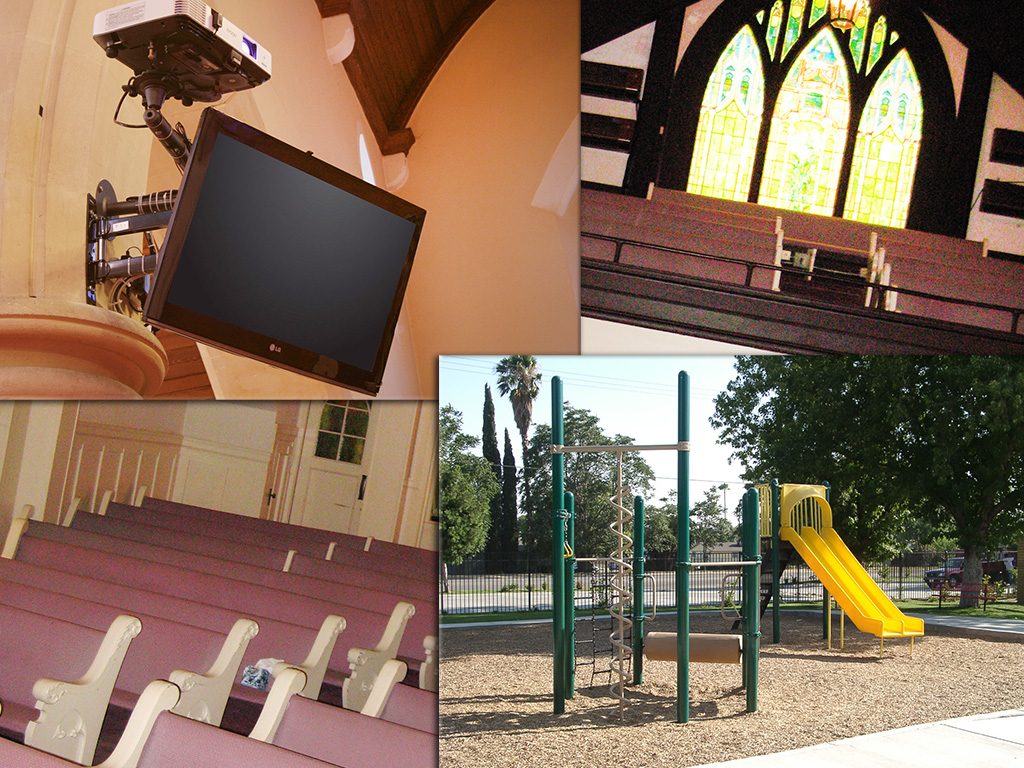
Tenants love to improve the facilities they rent by either painting the walls, installing new carpet, or mounting a video projector and screen for their Sunday service, or otherwise. In most instances, the landlord church has no problem with these improvements. The trouble however, arises at the end of the rental term when the tenant wants to remove their expensive video projector, but the landlord wants it to remain as a fixture attached to the property. If the rental agreement in silent in this regard, who gets the projector and what about the damage caused by its installation or removal?
Fixtures:
In its most basic form, a fixture is personal property that has been attached to the real property, such as a wall, which cannot be removed without its destruction or causing damage to the wall, fixed real property.
As stated in the California Civil Code, “A thing is deemed to be affixed to land when it is attached to it by roots, as in the case of trees, vines, or shrubs; or embedded in it, as in the case of walls; or permanently resting upon it, as in the case of buildings; or permanently attached to what is thus permanent, as by means of cement, plaster, nails, bolts, or screws…”
However, as you will see below, just because something is affixed or otherwise attached to the building, such as a video projector, does not necessarily mean that the landlord with be able to retain possession once the tenant leaves.
Furthermore, the Civil Code goes further in stating in part that, “when a person affixes his property to the land of another, without an agreement permitting him to remove it, the thing affixed, except as otherwise provided in this chapter, belongs to the owner of the land, unless he chooses to require the former to remove it or the former elects to exercise the right of removal provided for in Section 1013.5 of this chapter.”
Removal:
As per California Civil Code §1013.5, if a tenant, acting in good faith erroneously believes that they have the right to affix personal property to the land or building of their landlord, the tenant shall have the right to remove that object upon payment to the landlord for any damage to the real property that may result.
However, the Civil Code goes on to state in §1025 that when personal and real property have been united so as to form a single thing and cannot be separated without injury, the whole belongs to the thing which forms the principal part, the real property. However, the landlord must reimburse the value of the residue to the other, or surrender the personal property.
In order to better understand the above, the Courts have adopted a three-part test which is commonly used to determine whether or not the personal property has become a fixture, namely: 1) physical annexation; 2) adaptation to use with real property; and 3) intention to annex it to real property.
Trade Fixtures:
Although a well written rental agreement will often include specific language wherein the tenant’s intentions are defined in regard to particular improvements and their later removal, this is not always the case. Where there is no specific language, the tenant’s ability to later remove an item affixed to the property may by limited by the “trade fixture” doctrine. “A tenant may remove from the demised premises, any time during the continuance of his term anything affixed thereto for purposes of trade, manufacture, ornament, or domestic use, if the removal can be affected without injury to the premises, unless the thing has, by the manner in which it is affixed, become an integral part of the premises, (California Civil Code §1019).
Additionally, a tenant’s right to remove a fixture is limited by the passage of time. A tenant who wrongfully removes a fixture or other improvement to the premises is liable for damages and may be criminally liable for theft or embezzlement.
Conclusion:
Whether an item has lost its characteristic as personal property and has become a fixture, is a question of fact as to whether or not the property has lost its character and has become a fixture. An agreement between the parties identifying what can and cannot be affixed and later removed will govern and situation.
Notes:
Generally, unless a lease provides otherwise, the fixtures on the rental property becomes the property of the landlord. However, “trade fixtures,” which are attached for purposes of trade, manufacture, ornament, or domestic use may generally be removed provided they have not become an integral part of the real property and removed prior to the end of the term.
Please see our other related articles
Eminent Domain and Inverse Condemnation
Church Officer and Director Liability
The Harm in Renting Out the Church Parsonage
Why Use Bushore Real Estate
Disclaimer: Every situation is different and particular facts may vary thereby changing or altering a possible course of action or conclusion. The information contained herein is intended to be general in nature as laws vary between federal, state, counties, and municipalities and therefore may not apply to any given matter. This information is not intended to be legal advice or relied upon as a legal opinion, course of action, accounting, tax or other professional service. You should consult the proper legal or professional advisor knowledgeable in the area that pertains to your particular situation.
